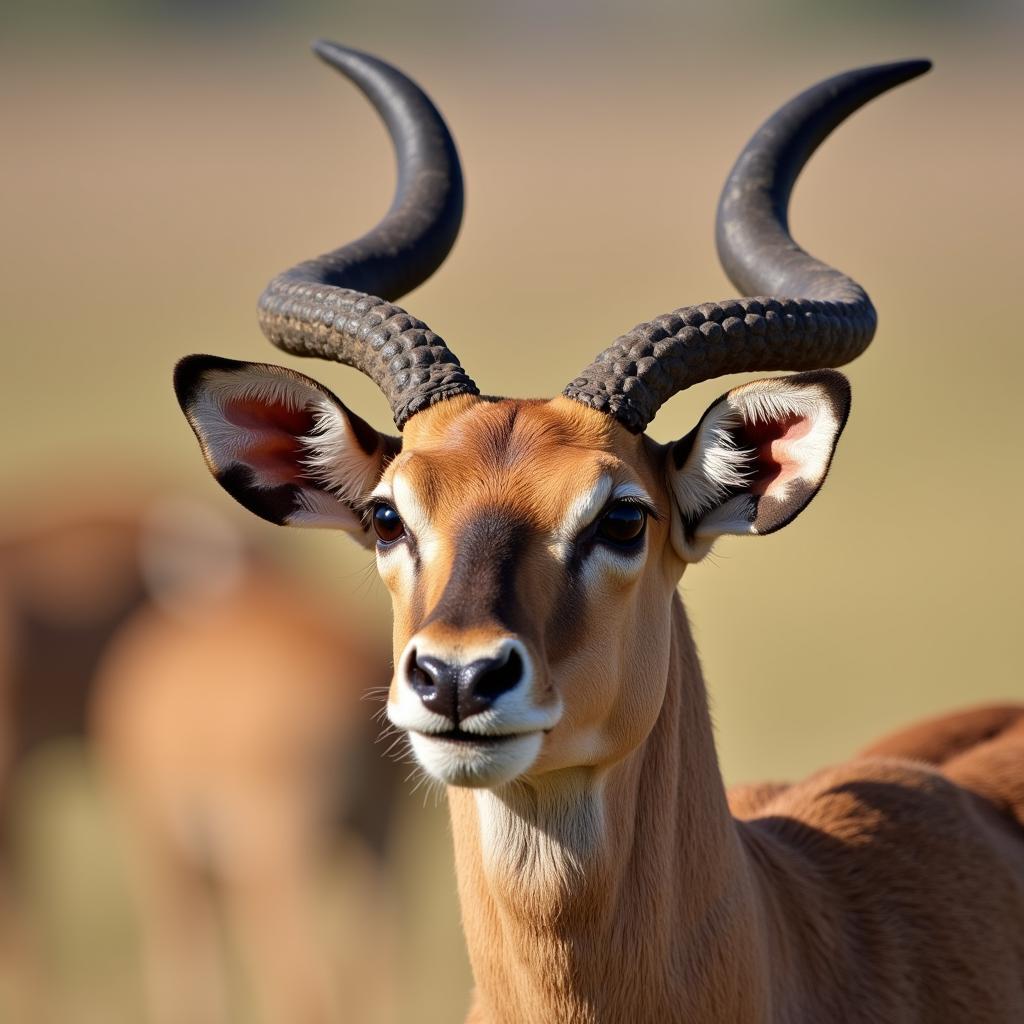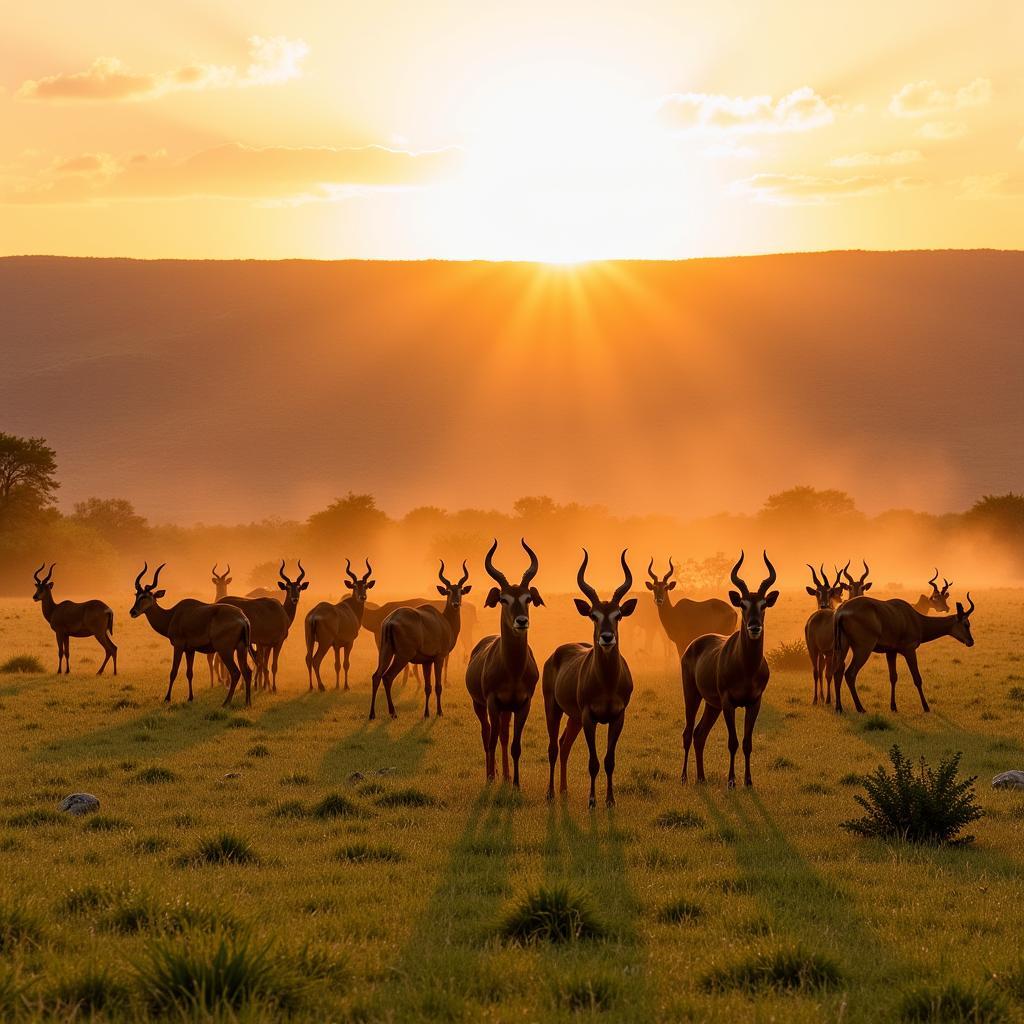The Majestic African Antelope: A Guide to the Common Eland
The common eland, a majestic African antelope, captivates onlookers with its size and grace. This gentle giant, often referred to as the “Lord of the Plains,” roams the savannas and grasslands of sub-Saharan Africa.
Understanding the Common Eland: Size, Appearance, and Habitat
The common eland holds the title of the largest antelope species globally. Males, significantly larger than females, can reach a shoulder height of up to 1.8 meters (6 feet) and weigh up to 940 kilograms (2,070 pounds). Both sexes boast impressive, tightly spiraled horns, with those of the female being longer and thinner.
 Close-up of a common eland's face and horns
Close-up of a common eland's face and horns
Their coats vary depending on their geographic location. Southern elands have a fawn-colored coat with up to twelve vertical white stripes on their torso, while those in the north have a more sandy-colored coat with fainter stripes. This adaptation helps them blend seamlessly into their surroundings, providing camouflage from predators.
These magnificent creatures inhabit a variety of habitats, from open grasslands and woodlands to mountainous regions, showcasing their adaptability to diverse environments.
Social Behavior and Diet of the Common Eland
Common elands are social animals, often congregating in herds that can number in the hundreds, especially during the dry season when resources are scarce. These herds, primarily comprised of females and their calves, are led by a dominant bull.
 A herd of common eland grazing on the African savanna
A herd of common eland grazing on the African savanna
As herbivores, they play a vital role in their ecosystem. Their diet consists primarily of grasses, leaves, and fruits, and they are known to travel long distances in search of food and water. Interestingly, they possess a unique adaptation: the ability to raise their body temperature to reduce water loss in arid conditions.
The Eland’s Role in African Culture and Conservation
The common eland holds cultural significance in many African societies. Their impressive size and strength have made them a symbol of power and prosperity in some cultures, while others revere them for their gentle nature.
“The eland is a true symbol of the African savanna,” says Dr. Amani Jabari, a wildlife biologist specializing in African ungulates. “Their presence indicates a healthy ecosystem, and their conservation is crucial for maintaining biodiversity.”
However, despite their size and resilience, elands face threats such as habitat loss due to human encroachment and agricultural expansion. Poaching also poses a significant challenge to their populations. Conservation efforts are underway to protect these magnificent creatures and their habitats. These initiatives include establishing protected areas, anti-poaching patrols, and community-based conservation programs that engage local communities in protecting this iconic species.

